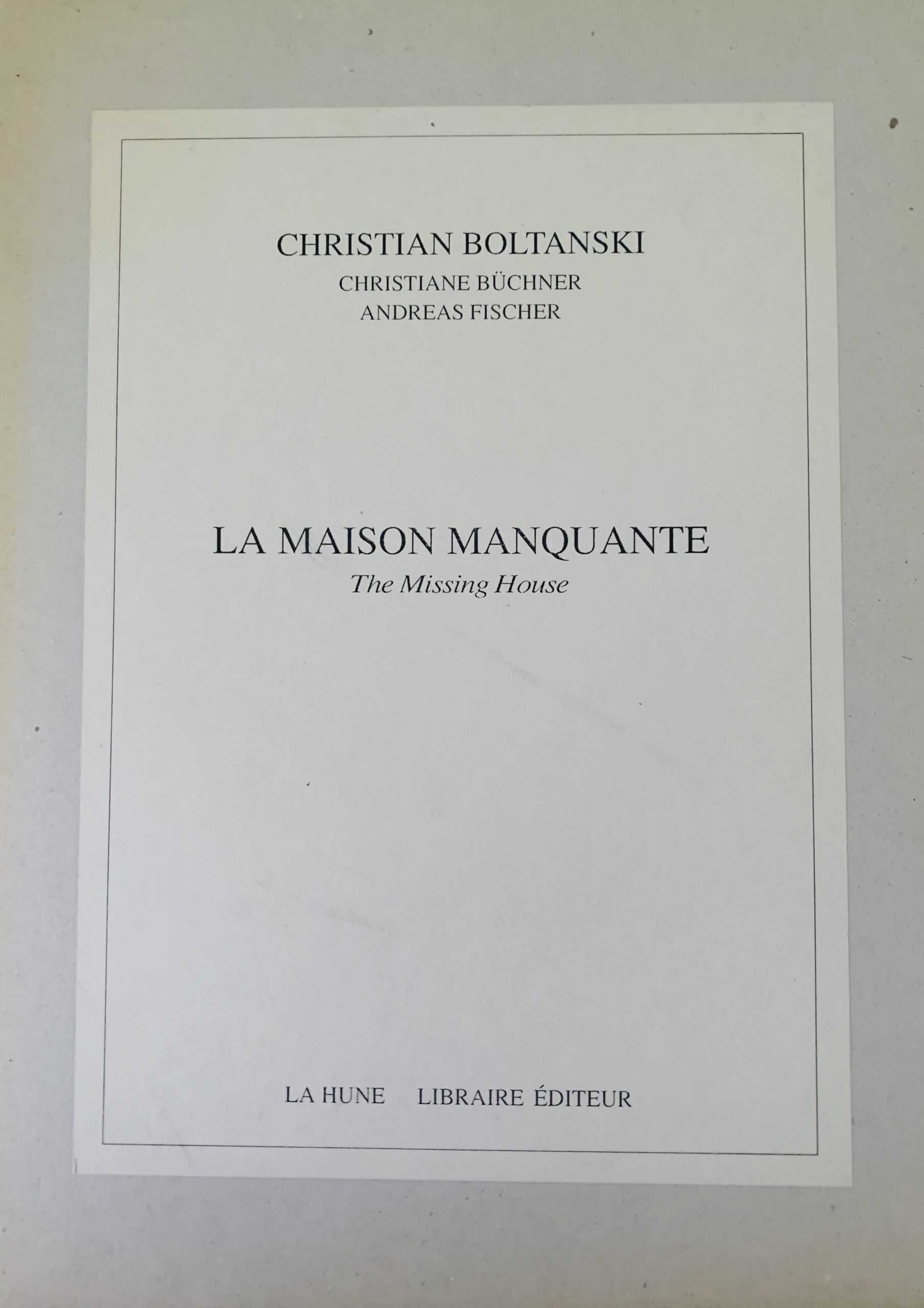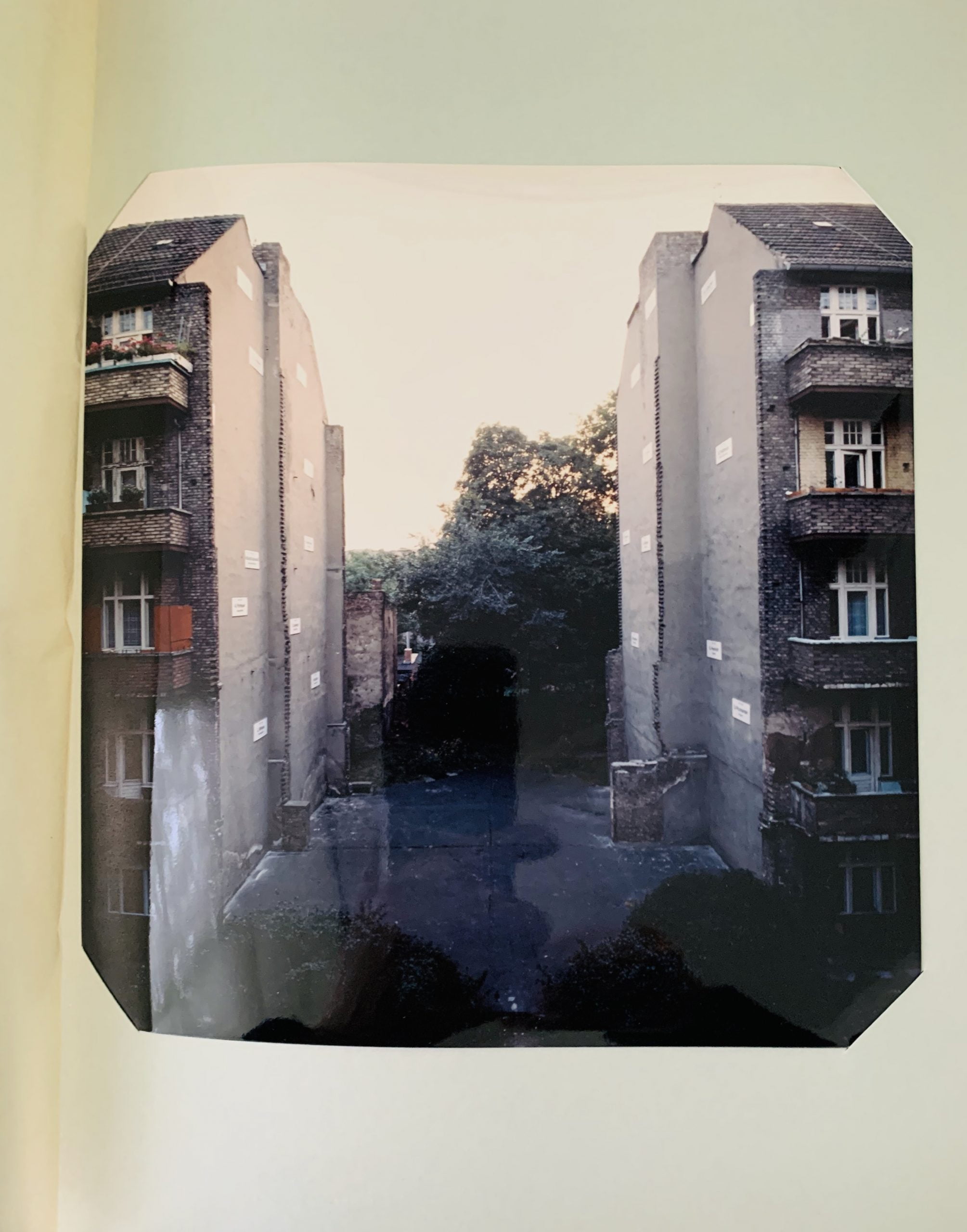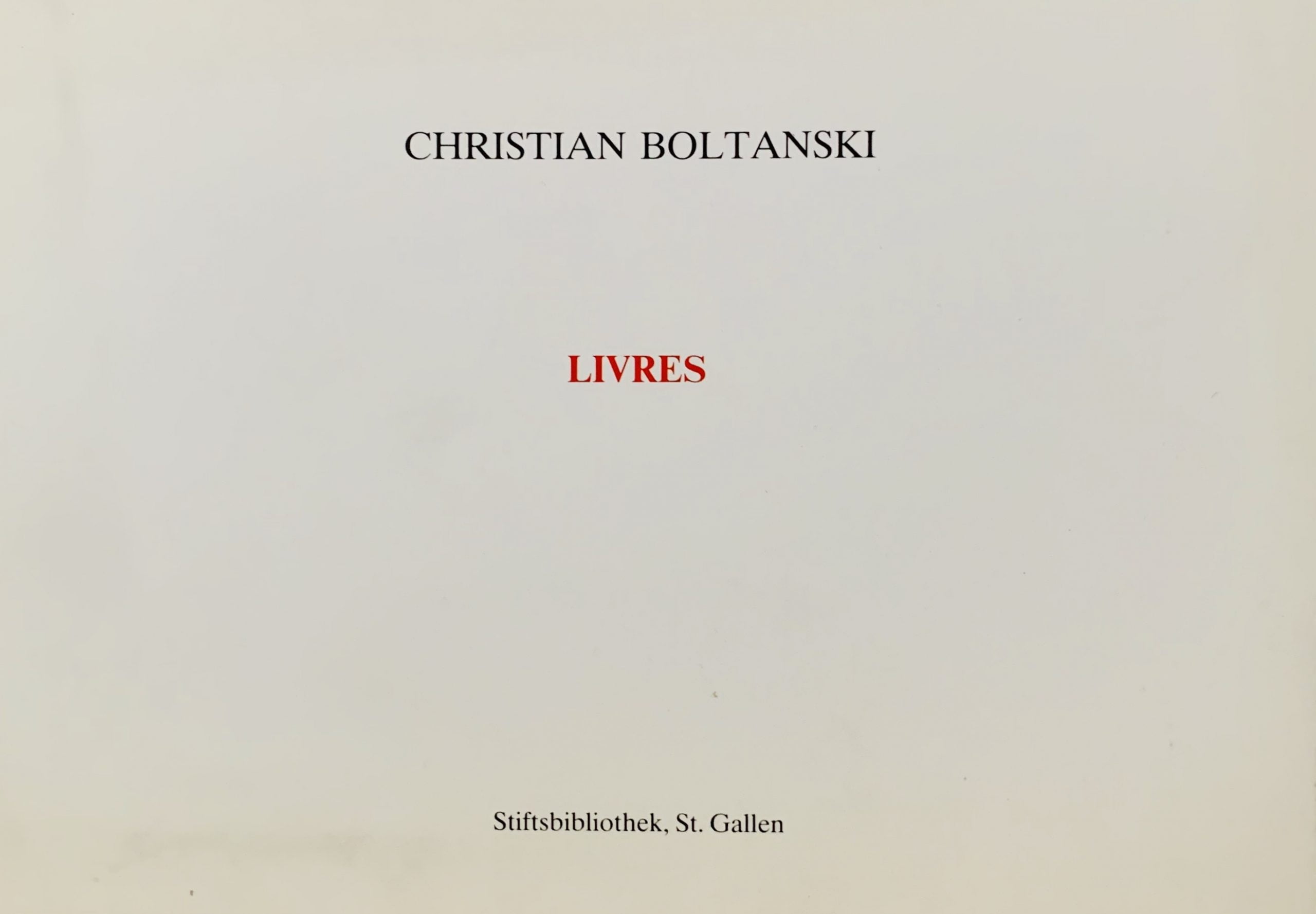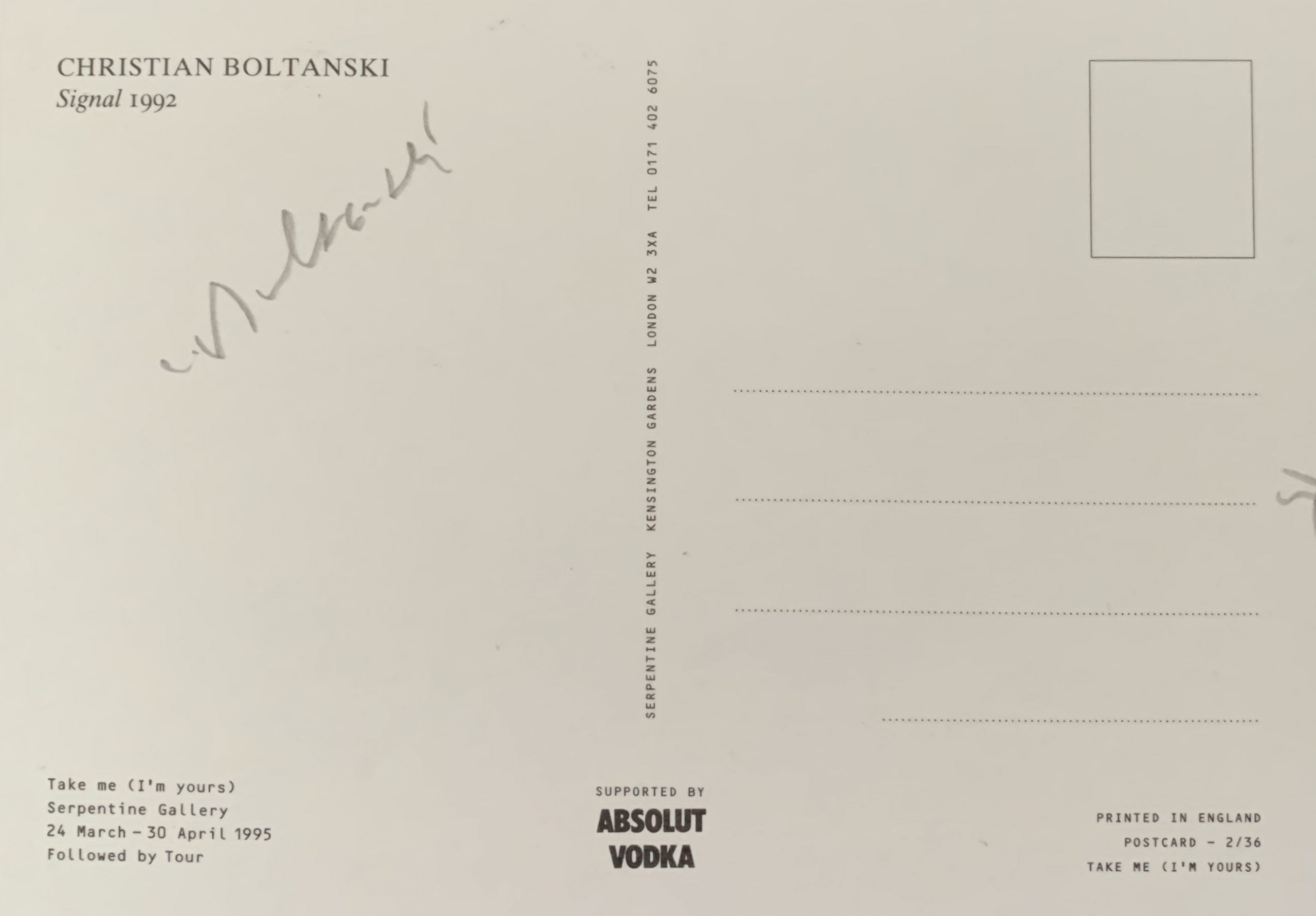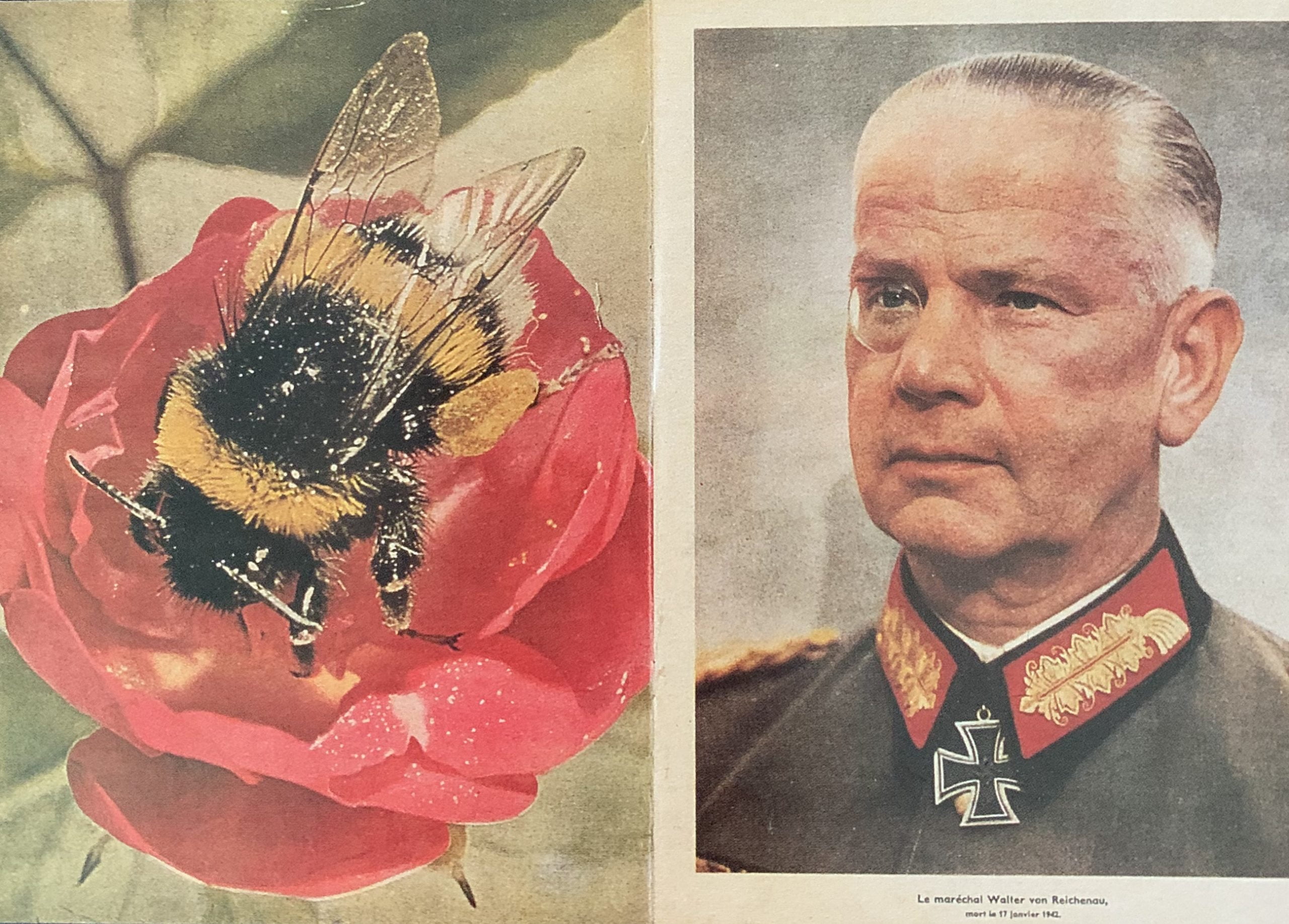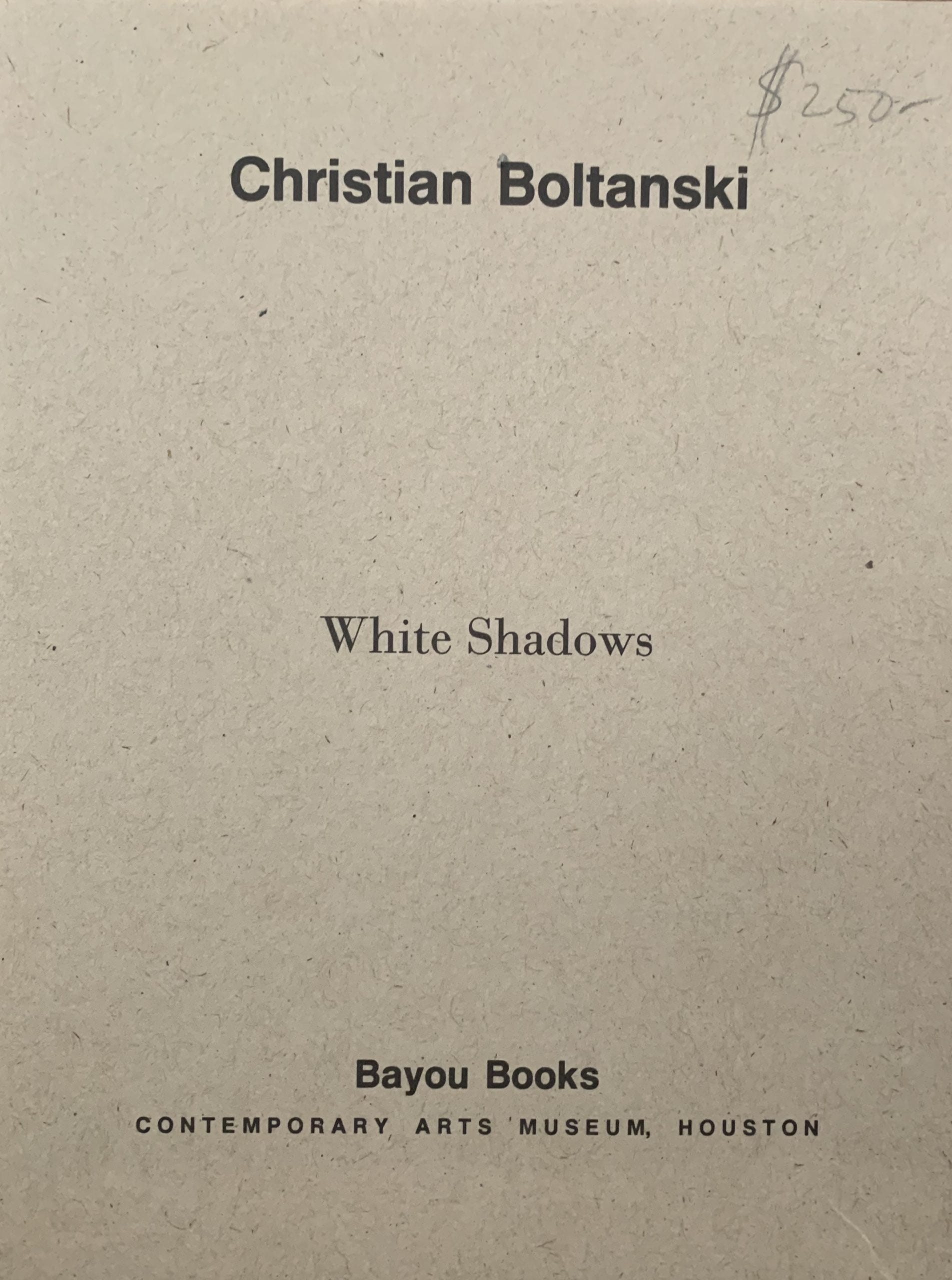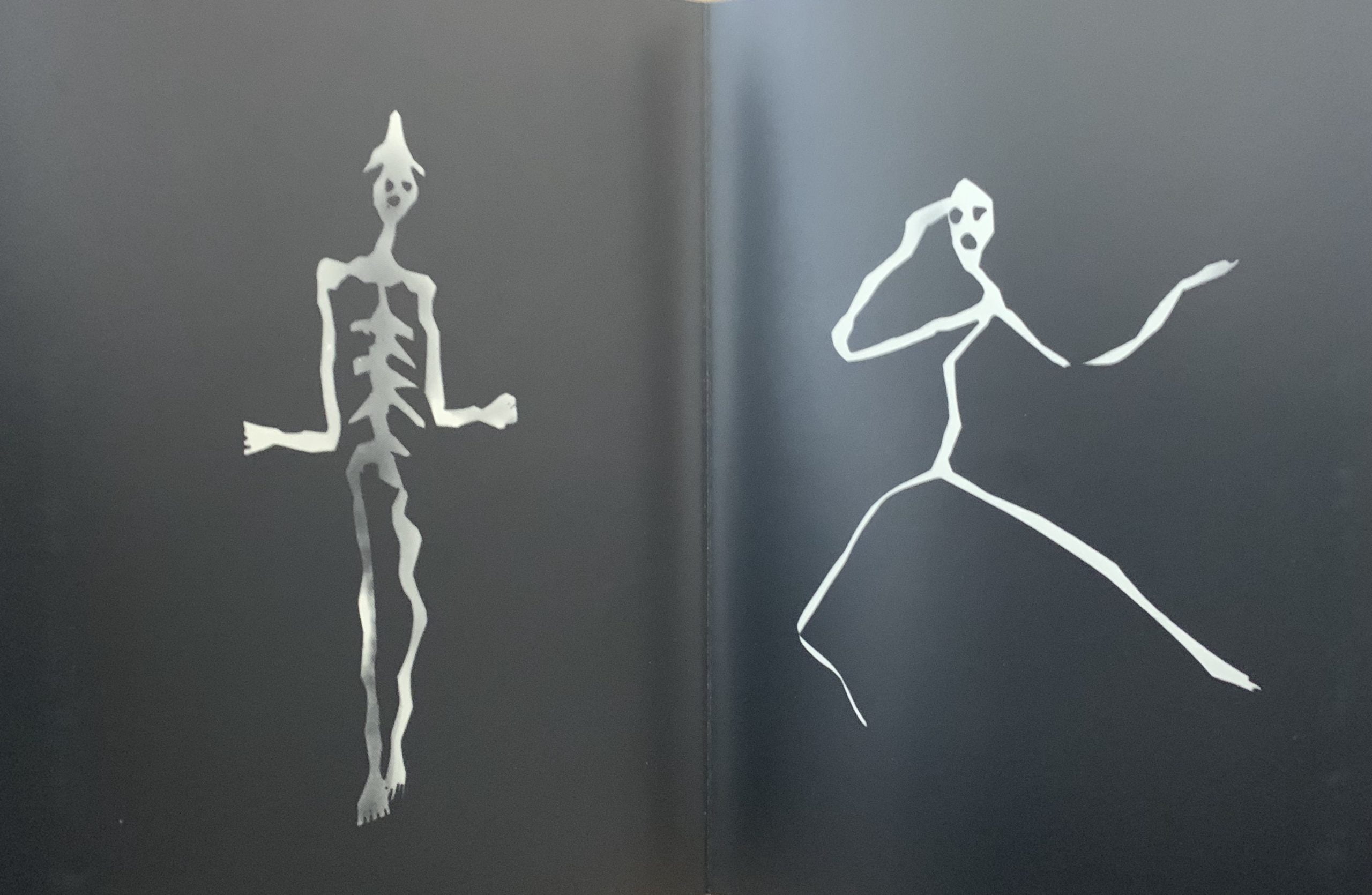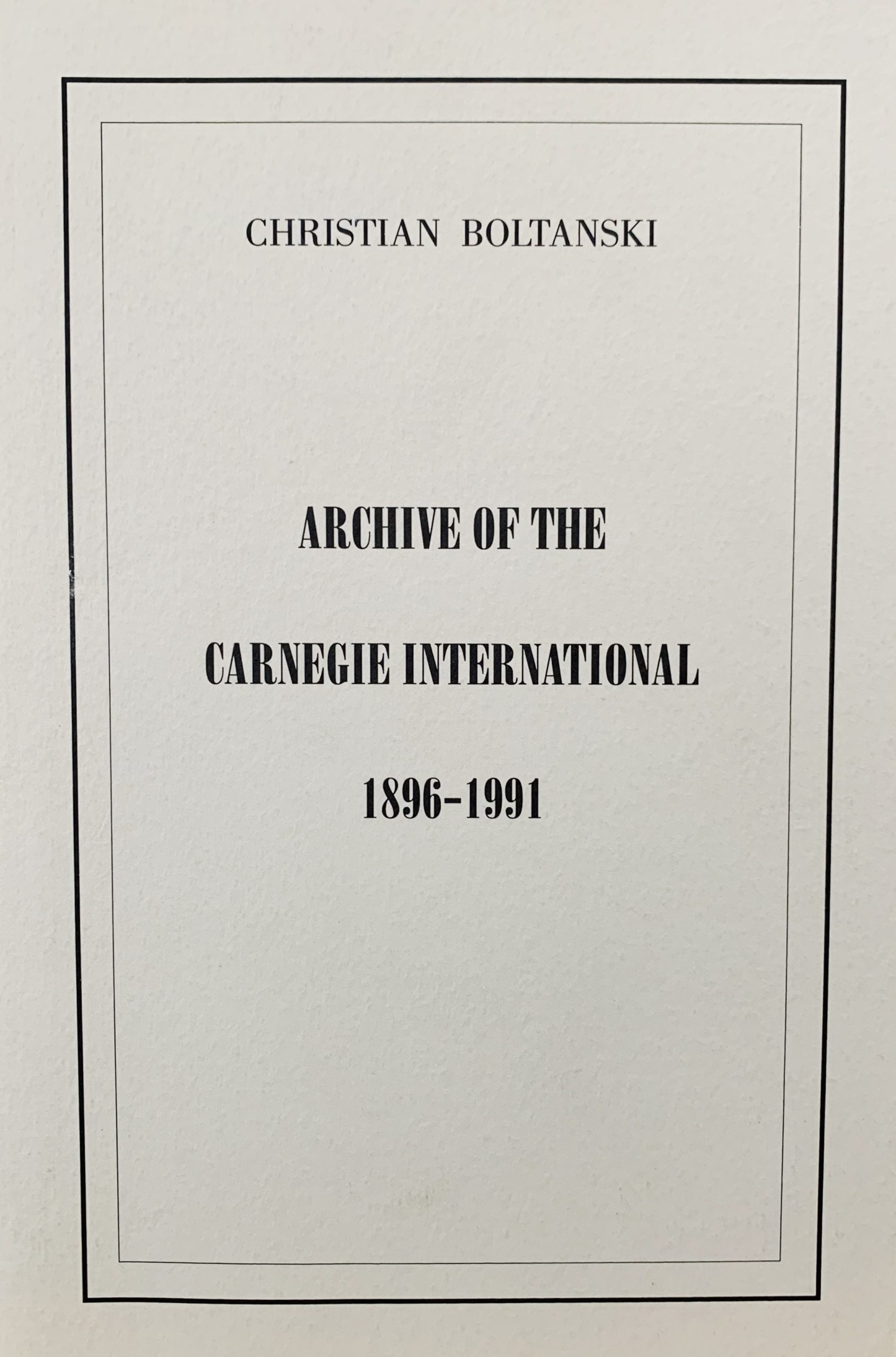Paris: La Hune, November 1992
33.5 x 24 x 5.5cm, one part archival box with pasted on title label, content of eight folders containing original & reproduced photographs, maps, sketches, photographs, transcripts, and documents relating to the occupants of a destroyed house (bombed by the Allies on 3 February 1945 which killed most of the residents).
For an exhibition in Berlin entitled "Die Endlichkeit der Freiheit", Boltanski initially placed "a series of 12 black and white plaques each mounted on the facing walls, storey by storey, indicating the family name, profession, and period of residency of each tenant who had lived in the bombed out apartments."
At the same time in East Berlin, Boltanski exhibited a series of vitrines with archival documentation of the various families and the building (the research here should be credited to art student, Christiane Büchner and Andreas Fischer). Interestingly during the research Boltanski and his assistants discovered that prior to 1942, many of this obliterated building's inhabitants had been Jews, until they were evicted, and deported to concentration camps.
The folders have around 150 photographs, photocopies, offset and stencil reproductions, postcards, maps, and other facsimile items - the eight folders are:
Folder 1: La Maison Manquante/The Missing House 15, Grosse-Hamburger-Strasse, Sept. 1990. A text in French faces an original colour photograph of the installation with tissue guard.
Folder 2: Autour de la Maison Manquante
Folder 3: Ceux Qui Vivaient au 15, Grosse-Hamburger-Strasse, de 1930 à 1945
Folder 4: Madame Kalies
Folder 5: Kurt Porteset
Folder 6: Monsieur Schnapp
Folder 7: Le 3 Février 1945
Folder 8: Le Cahier de Quittances
This is one of the most difficult to find of later artist's books by Boltanski and certainly one of his most complex productions, the level of research and the requirement to recreate original documents in high quality reproduction must have taken a lot of effort.
As usual there is no moral commentary on the events or people included in the survey of the building, The fact that some residents were Jews is ignored other than mentioned although readers may feel some irony present here. The bomb was neutral in its effect - devastating but uncaring of past history or status. It is a simple record of what happened - and an imperfect record as all historical reconstitution must be
This is one of 100 signed and numbered copies (aside from 20 HC copies) on a label on the inside front cover of the archival box and is in VG+ condition, complete although the two original thick rubber bands that close the folder are missing. A wonderful production.
...


